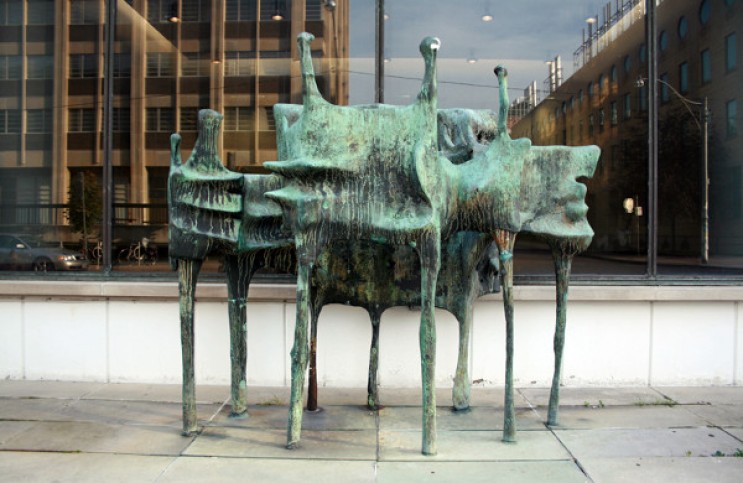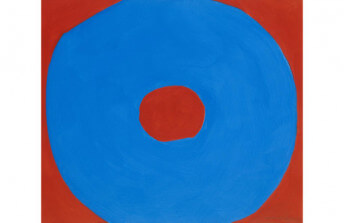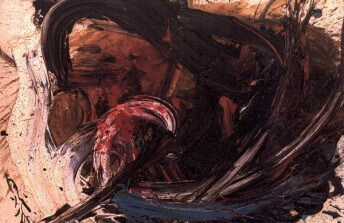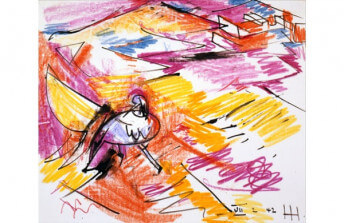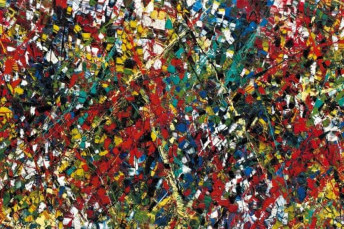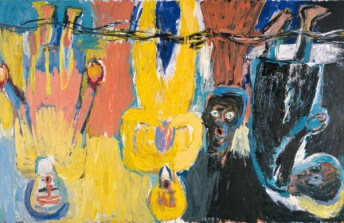How Painters Eleven Members Brought Abstract Art to Canada
Jun 9, 2021
Active between 1953 and 1960, Painters Eleven (P11) was a short-lived but hugely influential group of eleven Canadian abstract artists who took a leading role in Canada’s post-war art world. While abstraction was taking much of the world by storm — most notably in movements such as Abstract Expressionism in New York, Art Informel in Europe, Gutai in Japan, and Neo-Concrete in Brazil — Canada remained largely removed from these innovations in color, shape and design. The artwork idealized by the Canadian establishment was that embodied by Group of Seven (1920-1933), which promoted landscape painting as a distinctly Canadian art form, and dominated Canada’s post-war commercial galleries and art institutional ideas. Graham Coughtry, a Canadian modernist painter of this period, complained that “every damn tree in the country has been painted.” However, many Canadian artists began exploring the abstract techniques and styles appearing abroad. They saw that abstraction offered opportunities for artists who sought to convey emotion and individuality, rather than reimagine the Canadian landscapes of previous generations. The issue that artists such as those in Painters Eleven faced was how to get Canadians to appreciate this work and open their minds to new possibilities.
A Group is Formed
In the 1940s and 1950s, many artists had tried to introduce abstraction to Canada, with little success. One of the boldest, a Surrealism-inspired artist group called Les Automatistes, attempted to overthrow traditional ideals with their manifesto, Refus Global. Then in 1952, Toronto-based artist Alexandra Luke (1901-1967) organized the multi-city Canadian Abstract Exhibition, which exposed many Canadians to abstraction for the first time. Around the same time, artist William Ronald (1926-1998), who had recently visited New York and been exposed to the American Abstract Expressionists, tried to use his commercial contacts in Toronto to push abstraction into Canadian culture. Through his work as a window designer for the upscale department store Simpson’s, he created window displays in 1953 entitled Abstracts at Home, pairing abstract artwork and traditional furnishings to illustrate how abstraction could bring color and vibrancy to every-day spaces. Luke and Ronald believed they had a better chance of being accepted as a group than as individuals, and formed Painters Eleven along with other artists in Toronto who shared their passion for abstraction.
At least four members of the group had studied under the renowned German expatriate and modernist Hans Hoffman. Along with Ronald and Luke, the other original members were Jack Bush (1909-1977); Kazuo Nakamura (1926-2002); Oscar Cahen (1916-1956); Thomas Hodgson (1924-2006); Jock Macdonald (1897-1960); Ray Mead (1921-1998); Howard Town (1924-1990); Walter Yarwood (1917-1996); and Hortense Gordon (1886-1961). Town came up with the name, possibly a play on Group of Seven’s name. Unlike other artistic groups that shared a style or technique, P11’s only unifying feature was their commitment to abstraction as Canada’s next great artistic movement. Boasting different training, influences, ideas and backgrounds (Hodgson, for example, was a two-time Olympic canoer), the artists brought distinct styles to abstraction. Gordon had studied European masters and infused realism and still life to the world of abstraction. She incorporated geometric shapes into her work, while often maintaining a recognizable if abstracted setting of bottles, fruits, or flowers. Nakamuro, on the other hand, was fascinated by science and mathematics and explored grids and Fibonacci numbers in his linear, monochromatic works. Indeed, the artists’ differences helped illustrate the variety and opportunities of abstraction even within a localized community.
Differences & Progress
There were no leaders or structure to P11. Generational gaps separated members, and many debated the true meaning of abstraction. Their founding principals read: “By now there is little harmony in the noticeable disagreement, but there is profound regard for the consequences of our complete freedom.” In pursuit of artistic freedom and a shared interest in abstraction, the artists overcame their differences and held regular exhibitions around Canada. Their biggest break came in 1956 when Ronald secured a show for the group alongside the American Abstract Artists at the Riverside Gallery in New York. Lawrence Campbell, noted critic for Art News, wrote of the exhibition, “I think the Americans who saw the exhibitions today were surprised to find that the level of Canadian painting was comparable to American painting, as inventive, and if anything freer, more creative, and less self-conscious compared to works by the members of the American Abstract Artists.” Meanwhile in Canada, while abstraction slowly gained a following, push-back continued from the cultural establishment, most notably from Canadian landscape painter Kenneth Forbes who proclaimed, “modernistic painting is the greatest hoax in the history of human art.” Many Canadians simply questioned whether P11’s abstract style was too reflective of the United States and Europe, at a time when Canada was striving for its own cultural identity.
Celebrated American art critic Clement Greenberg met with the group and encouraged them to emphasize their independence from American Abstract Expressionism. “What you have to do is realize that within yourselves you have the personal abilities to say something as profound as anywhere in the world.” His guidance encouraged some like Bush and Ronald to pursue international careers while others embraced their roles as founders in Canada’s new-found abstract art scene. Ultimately, at the height of their success in 1960, Painters Eleven voted to disband. The group had been reduced to nine members — Cahen tragically died in a car accident in 1956 and Ronald had left to pursue other opportunities. The remaining members felt they had achieved their mission of bringing abstraction to Canada and making it a recognized and respected field. To keep their legacy alive and promote the study of abstraction, Luke donated much of her collection to the formation of the Robert McLaughlin Gallery (RMG). RMG now houses over 1,000 works by the group, the largest P11 collection in Canada, and a living testament to the new era of individuality and freedom in Canadian art that was ushered in by this influential group.
Featured image: Walter Yarwood - Cedars. Photo by Shaun Merritt
By Emelia Lehmann
